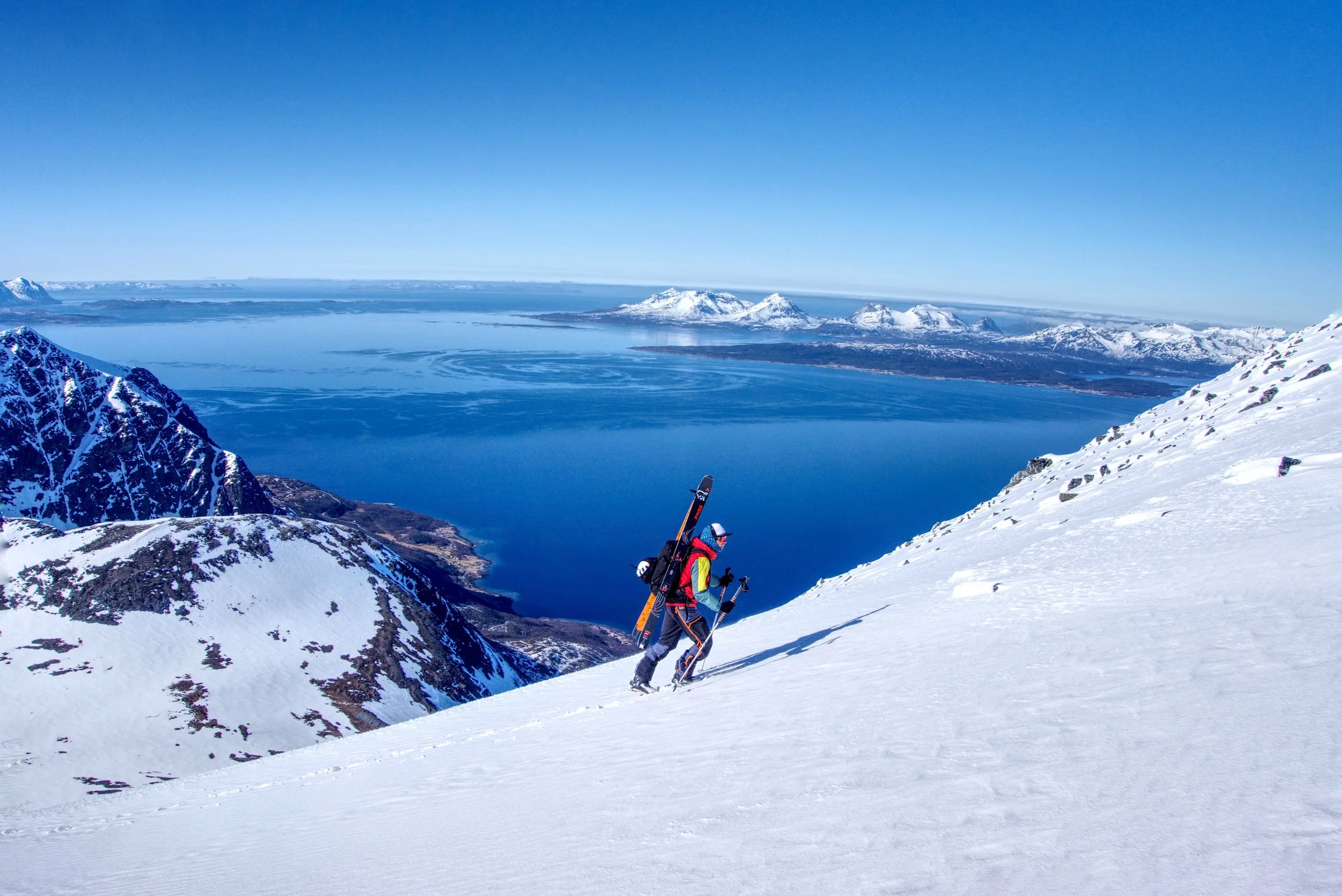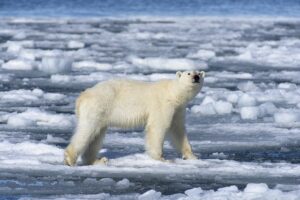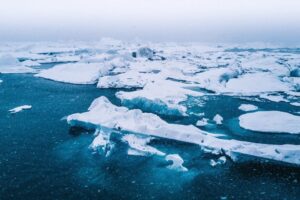Picture this: You’re standing at the edge of a frozen fjord, the midnight sun dipping low but never quite setting, casting a golden hue over jagged peaks blanketed in snow. The air is crisp, almost electric, and far below, whales breach the icy waters. That’s the magic of Arctic Norway – a place where adventure isn’t just an activity; it’s a heartbeat. I’ve chased that thrill myself, skinning up silent slopes and swinging axes into shimmering blue ice walls, feeling alive in ways a city never could. If you’re drawn to the raw beauty of the north, ski touring and ice climbing here offer experiences that blend challenge with sheer wonder. This guide dives deep into these pursuits, drawing from real trips, expert insights, and practical tips to help you plan your own epic journey.
What is Ski Touring and Ice Climbing?
These two winter sports transform Norway’s Arctic landscapes into playgrounds for the bold. Ski touring lets you earn your turns by ascending mountains on skis with climbing skins, then descending through untouched powder. Ice climbing, meanwhile, involves scaling frozen waterfalls and ice formations using crampons and axes. Both demand respect for the elements – avalanches, cold snaps, and shifting ice can turn paradise into peril quickly.
Ski Touring Explained
Ski touring combines cross-country mobility with downhill thrills, perfect for exploring remote fjords and peaks. You’ll hike uphill on lightweight skis, peel off the skins at the summit, and carve down fresh lines. It’s meditative yet exhilarating, especially under the Northern Lights.
Ice Climbing Basics
Ice climbing requires technical skill, gripping tools into vertical or overhanging ice while kicking in crampons for footholds. Routes vary from gentle WI2 (water ice grade 2) for beginners to steep WI6 monsters. Safety gear like helmets and harnesses is non-negotiable, and starting with a guide builds confidence fast.
Why Choose Arctic Norway for These Adventures?
Norway’s Arctic region, north of the Arctic Circle, boasts dramatic scenery – think fjords carving through mountains, glaciers calving into the sea, and endless white expanses. The stable snowpack from February to May makes it ideal for ski touring, while cold snaps form reliable ice from November to March. Plus, the chance to spot auroras or wildlife adds an otherworldly vibe.
The Allure of the Midnight Sun and Northern Lights
In summer, the sun never sets, extending your touring days into endless light – I once skied until midnight, feeling like time had paused. Come winter, the auroras dance overhead during ice climbs, turning a tough ascent into a cosmic reward. It’s nature’s light show, free with every adventure.
Unique Arctic Wildlife Encounters
While touring, you might spot reindeer herds or arctic foxes scampering across the snow. On one trip near Tromsø, a pod of orcas paralleled our group along the fjord – a reminder that you’re sharing space with wild wonders. Always keep distance to respect their habitat.
Best Locations for Ski Touring in Arctic Norway
The Lyngen Alps and Lofoten Islands top the list for ski touring, offering sea-to-summit routes with fjord views. These spots mix accessibility with remoteness, drawing adventurers from around the world. Expect ascents of 600-1500 meters, rewarding you with descents that feel like flying.
Lyngen Alps: A Ski Touring Paradise
Just east of Tromsø, the Lyngen Peninsula juts into the sea like a jagged spine, with peaks rising straight from the water. Tours here often start at sea level, climbing to summits like Store Blåmannen for panoramic descents. I recall panting up a 1000-meter skin track, only to whoop down powder that sparkled like diamonds.
Lofoten Islands: Dramatic Peaks and Ocean Vistas
Lofoten’s spiky mountains and fishing villages create a postcard-perfect backdrop for touring. Routes like Pilan offer easy starts with ocean views, ideal for mixed groups. The terrain varies from gentle slopes to steep couloirs – on my visit, we skied right to a beach, trading skis for a seaside picnic.
Tromsø and Surrounds: Urban Access to Wild Terrain
Tromsø serves as a gateway, with tours on nearby Lille Blåmannen drawing locals and visitors alike. It’s beginner-friendly yet challenging, with options for night skiing under auroras. The city’s vibe – cozy cafes post-tour – makes it a great base for blending adventure and comfort.
Top Ice Climbing Spots in Northern Norway
Ice climbing shines in areas like Narvik and Eidfjord, where frozen waterfalls cascade hundreds of meters. The Arctic’s cold ensures fat, reliable ice, but always check conditions via apps like Varsom. Venues range from roadside crags to remote gorges, suiting all levels.
Narvik: Arctic Ice in the Land of Lights
Narvik, near the Swedish border, hosts deep gorges with world-class routes up to WI7. The area’s northern location means consistent formations, and climbing here feels intimate – no crowds, just you and the ice. I’ve swung axes in sub-zero temps, the crunch echoing like applause.
Lyngen and Lofoten: Fjord-Side Frozen Falls
These islands double as ice havens, with climbs overlooking the sea. Routes in hidden valleys offer multi-pitch adventures, blending climbing with scenic beauty. One memorable ascent involved traversing a frozen stream to reach a 200-meter wall – exhausting, but the summit view erased all fatigue.
Tromsø Area: Accessible Ice for All
Near Tromsø, gorges like those in Bardu hide gems from single-pitch practices to long classics. It’s perfect for honing skills, with guides readily available. The short approaches mean more climbing time, and post-climb, soak in a sauna – Norway’s ultimate recovery ritual.
Comparing Ski Touring and Ice Climbing Destinations
To help choose your spot, here’s a quick comparison of key Arctic areas:
| Location | Best For Ski Touring | Best For Ice Climbing | Accessibility | Scenery Highlight | Difficulty Range |
|---|---|---|---|---|---|
| Lyngen Alps | Sea-to-summit routes | Multi-pitch fjord ice | Fly to Tromsø | Dramatic fjords | Intermediate-Advanced |
| Lofoten Islands | Varied terrain views | Scenic frozen falls | Ferry/flight | Jagged peaks, ocean | Beginner-Expert |
| Tromsø Surrounds | Urban-based tours | Gorge and valley climbs | Easy city access | Auroras, wildlife | All levels |
| Narvik | Remote powder fields | Extreme WI grades | Train/flight | Deep gorges | Advanced |
This table highlights how each spot caters to different preferences, from scenic tours to technical climbs.
Pros and Cons of Guided vs. Self-Guided Adventures
Guided trips shine in Norway’s unpredictable weather, but going solo offers freedom. Weigh these before deciding.
Pros of Guided Tours
- Expert safety knowledge reduces avalanche risks.
- Local insights lead to hidden gems.
- Gear rentals and logistics handled, saving time.
Cons of Guided Tours
- Higher costs, around 2000-5000 NOK per day.
- Less flexibility in pacing.
- Group dynamics might not suit solo souls.
Pros of Self-Guided
- Total freedom to explore at your rhythm.
- Cheaper for experienced adventurers.
- Builds self-reliance and skills.
Cons of Self-Guided
- Requires avalanche training and gear like transceivers.
- Navigation challenges in whiteouts.
- Isolation amplifies risks – always tell someone your plans.
Essential Gear for Ski Touring and Ice Climbing
Packing right is crucial – Norway’s cold bites hard. For ski touring, lightweight skis, skins, and boots are musts; for ice, add axes, crampons, and screws. Don’t skimp on layers: merino base, insulated jackets, and waterproof pants. A thermos for hot drinks? Lifesaver – trust me, cold cocoa is no joke.
- Avalanche kit: Beacon, probe, shovel – practice using them.
- Navigation: GPS app like Varsom, plus paper maps.
- Climbing specifics: Harness, helmet, quickdraws for ice.
- Touring extras: Skins, bindings that switch modes easily.
For top tools, check brands like Black Diamond or Petzl. Buy from REI or local shops in Tromsø for quality.
Safety Tips: Navigating Avalanches and Cold
Safety first – Norway averages five avalanche deaths yearly, mostly tourers. Check forecasts on varsom.no daily. Dress in layers, stay hydrated, and know hypothermia signs. I once ignored numb toes and regretted it – warm up fast!
Avalanche Awareness
Enroll in courses via Norwegian Red Cross. Learn to read terrain: Avoid 30-45 degree slopes post-storm.
Weather Prep
Yr.no for forecasts; pack extra gloves and emergency bivvy. Winds can flip conditions quick.
Group Dynamics
Travel with buddies; use buddy checks for gear. If solo, hire a guide for peace of mind.
Best Time to Visit for Optimal Conditions
Prime ski touring runs February-May, with long days and stable snow. Ice climbing peaks November-March for thick ice. Spring blends both – milder temps, but watch for thaws. Avoid mid-winter polar nights unless you love headlamps.
How to Get There: Navigational Tips
Fly into Tromsø Airport, a hub for Arctic adventures. From Oslo, it’s a quick 2-hour flight. Rent a car for flexibility, or use buses/ferries to islands. For Lofoten, fly via Bodø then ferry – scenic bonus!
Transactional Guide: Booking Tours and Gear
Ready to book? Companies like Arctic Mountain Adventures offer packages from 4-7 days, max four per guide for intimate experiences. Northern Alpine Guides specialize in Lofoten climbs. For gear, rent from Tromsø Outdoor – affordable and reliable. Check https://www.visitnorway.com for deals.
Top Tour Operators
- Arctic Mountain Adventures: Ski and ice packages in Astafjord.
- Northern Alpine Guides: IFMGA-certified for Lofoten.
- Lyngen Lodge: Luxury base with guided tours.
People Also Ask
Drawing from common searches, here are real questions adventurers ask about these pursuits in Norway.
What is the best time for ski touring in Norway?
February to May offers stable snow and longer days, ideal for Arctic tours. Spring brings milder weather but check avalanches.
Is ice climbing dangerous in Norway?
It can be, due to falling ice and cold, but with guides and proper gear, risks drop significantly. Always prioritize safety training.
Where can I learn ski touring in Norway?
Courses abound in Tromsø or Lofoten via outfits like Folgefonni Glacier Team. Start with basics for safe fun.
What wildlife might I see while adventuring?
Reindeer, arctic foxes, and orcas are common. Respect distances to avoid disturbances.
How much does a guided tour cost?
Expect 2000-5000 NOK per day, including gear. Multi-day packages save money.
Integrating Other Adventures: Beyond Ski and Ice
Mix it up – kayak fjords post-tour or chase auroras on snowshoes. In summer, trade skis for hikes; winter, add dog sledding. Norway’s versatility keeps trips fresh.
Personal Story: My First Arctic Descent
I remember my inaugural ski tour in Lyngen: Skinning up in silence, heart pounding, then dropping into powder so deep it swallowed my whoops. Halfway down, an eagle soared overhead – pure magic. But slipping on ice taught me humility; always carry creepers. These moments build bonds with the land.
Emotional Appeal: Why These Adventures Change You
There’s humor in fumbling with frozen buckles, but the real pull is emotional – conquering a peak mirrors life’s climbs. I’ve laughed off wipeouts, teared up at sunrises. It’s therapy in motion, forging resilience and joy.
FAQ
How fit do I need to be for ski touring in Norway?
Moderate fitness suffices for basics, but advanced routes demand endurance for 1000+ meter ascents. Train with hikes and cardio beforehand.
What if I’m a beginner at ice climbing?
Start with guided intro courses in Tromsø – they’ll teach swings and kicks safely. No prior experience needed, just enthusiasm.
Are there family-friendly options?
Yes, easier tours in Geilo or Lofoten suit kids. Opt for guided family packages with shorter days.
How to spot Northern Lights during trips?
Head north in winter; apps like Aurora Forecast help. Clear nights post-climb are prime viewing.
What’s the environmental impact?
Stick to trails, pack out waste. Norway promotes leave-no-trace – your adventures preserve the pristine.
In wrapping up, Arctic Norway’s ski touring and ice climbing aren’t just sports; they’re portals to profound connection. From Lyngen’s powder to Lofoten’s ice walls, each step etches memories. Plan smart, respect the wild, and you’ll return transformed. For more, explore https://www.visitnorway.com or book via local guides. Safe travels – may your turns be epic and your axes sharp. (Word count: 2785)







